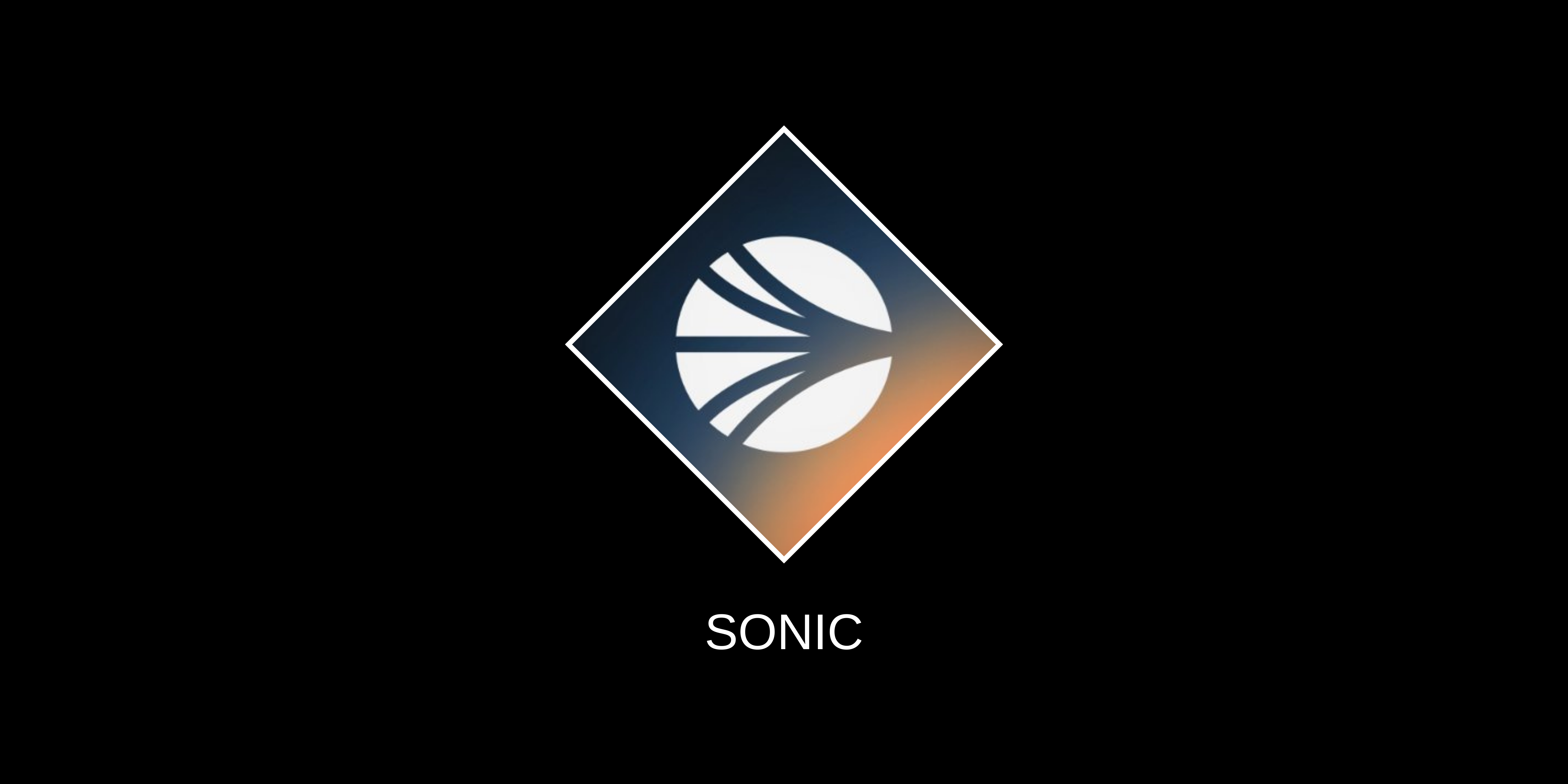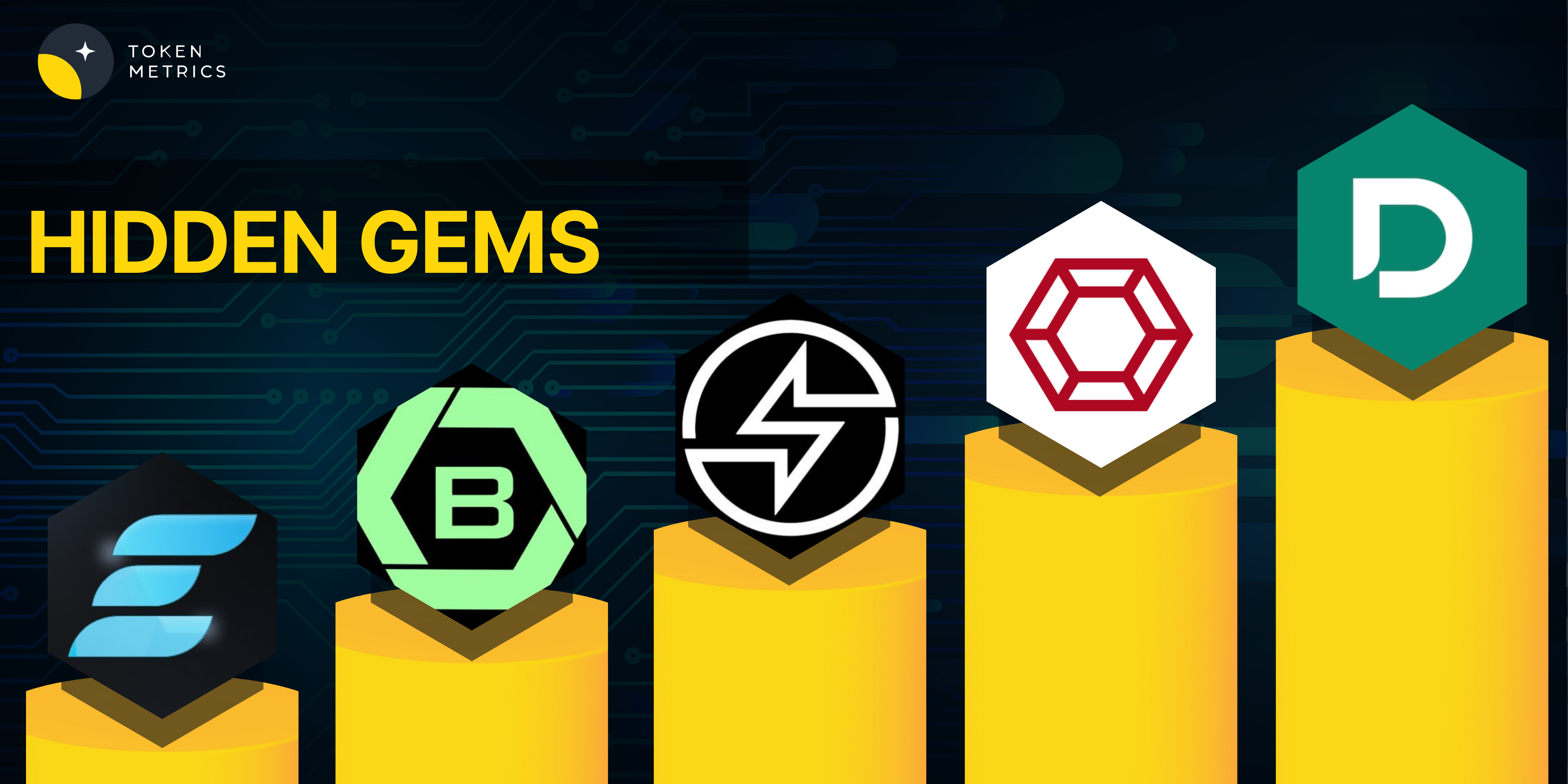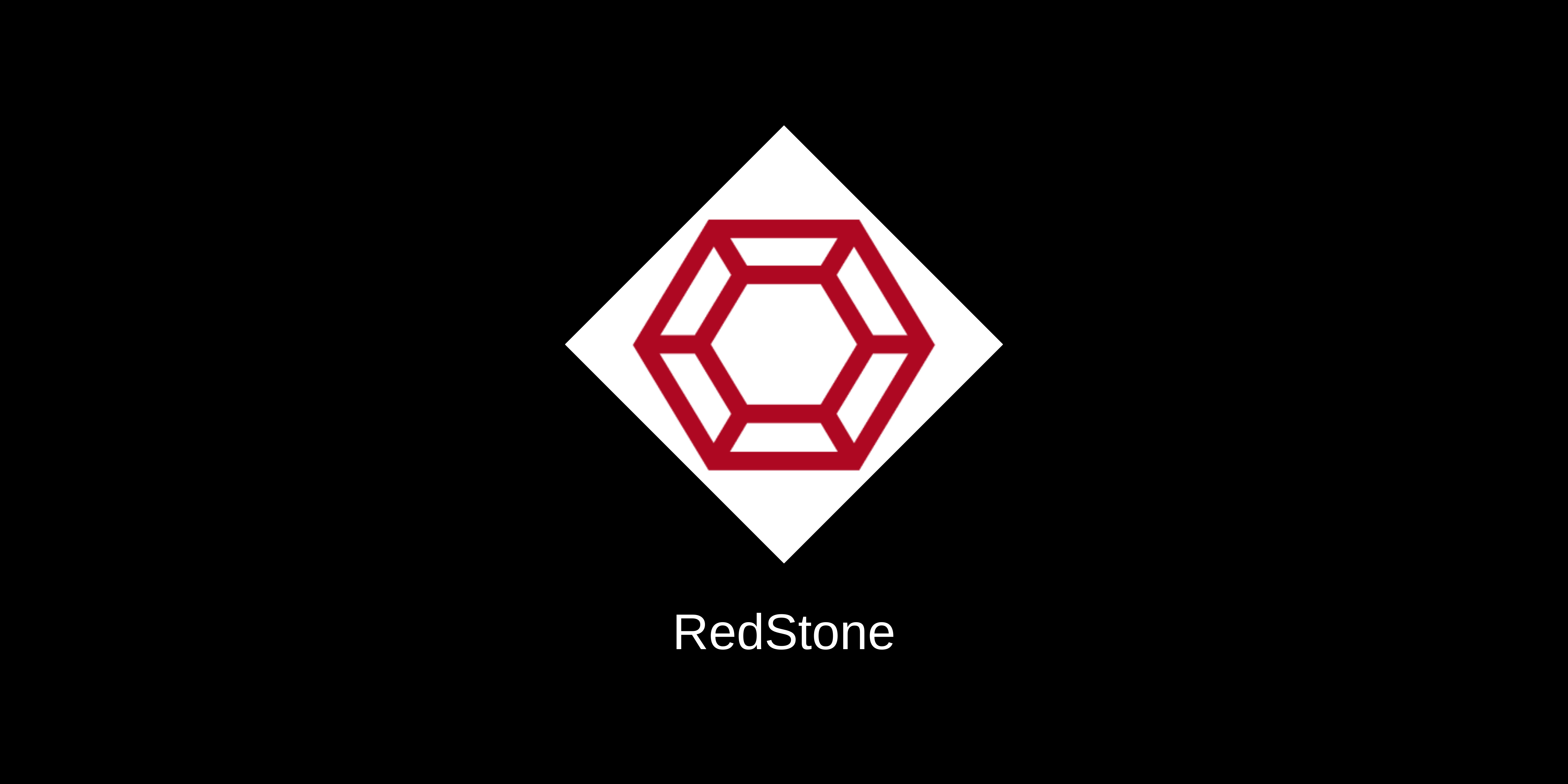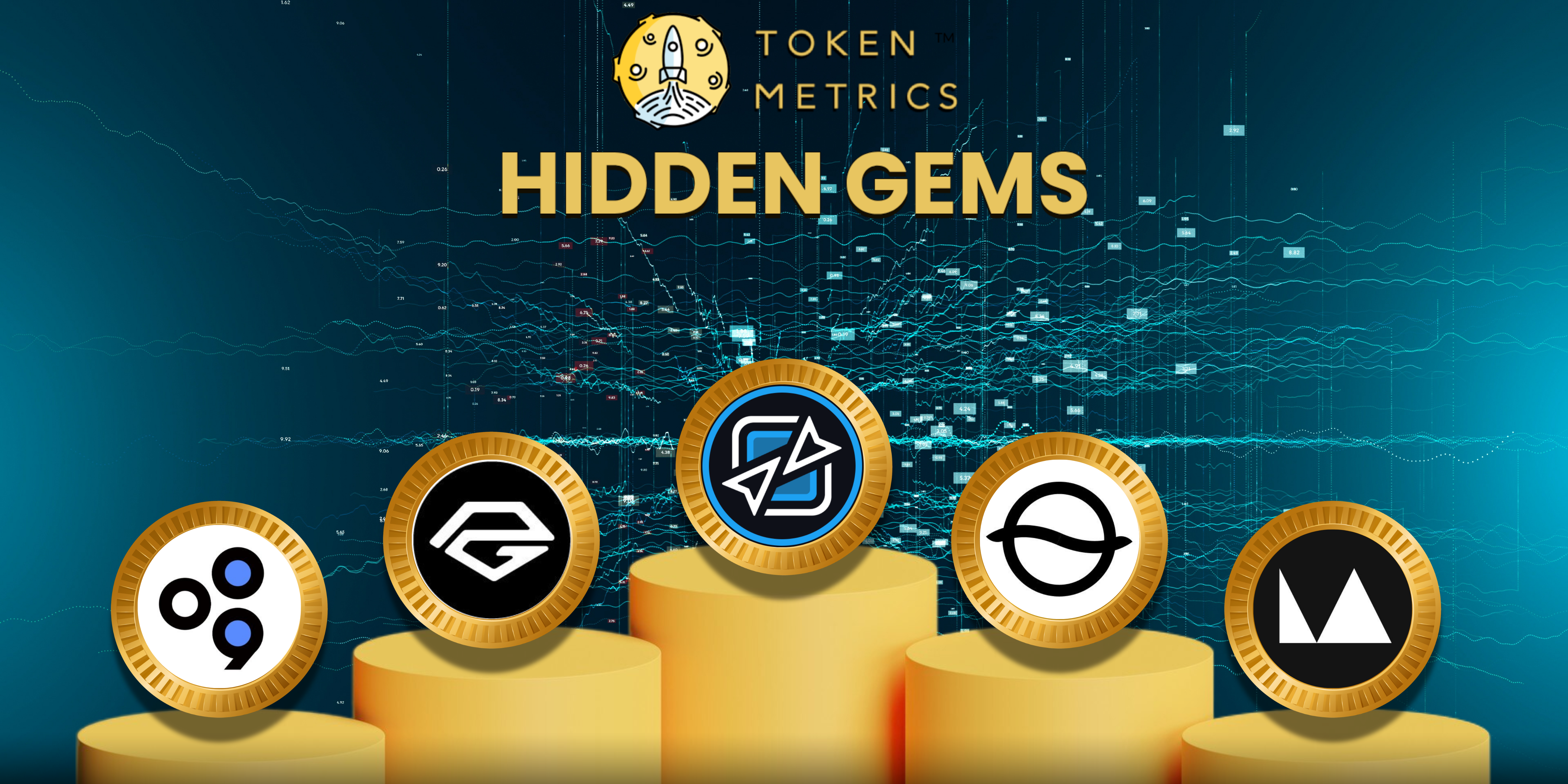Executive Summary

Allora is an open-source, decentralized marketplace that integrates artificial intelligence (AI), machine learning (ML), and blockchain technology to facilitate a seamless exchange of insights and data. In this ecosystem, “intelligence” encompasses valuable outputs such as predictions, sentiment analysis, and the results of both supervised and unsupervised learning models. By utilizing decentralized AI and ML, Allora enables users to create, evaluate, and monetize high-quality predictions directly on the blockchain. The platform is built around diverse participants—workers, reporters, and validators—who uphold the network’s integrity through a strategically designed incentive structure. The platform introduces incentive mechanisms that encourage model creators to evaluate and learn from other models within the network. These incentives are essential for fostering an AI ecosystem that continuously evolves, producing outputs that surpass the performance of any individual model contributing to the network.
About the Project
Vision – Allora aims to become an open-source, decentralized marketplace for intelligence, facilitating the exchange of data insights and predictions. By combining artificial intelligence, machine learning, and blockchain technology, Allora creates an ecosystem where contributors can generate, evaluate, and monetize high-quality intelligence. The platform promotes transparency, collaboration, and innovation, democratizing access to advanced AI capabilities across various sectors.
Problem – The most advanced machine learning (ML) models are currently centralized, controlled by a limited number of organizations, and function as “black boxes” largely incompatible with decentralized protocols and applications. While AI holds immense promise as a transformative technology, achieving efficient information exchange is one of the most significant challenges in the digital era. Effective information exchange empowers stakeholders to make informed decisions across various sectors, including logistics, planning, governance, and financial markets. However, when this information is available only to select participants within an ecosystem, it creates a competitive imbalance by giving these entities an undue advantage.
This concentration of power has led to several significant issues. A primary concern is that large language models (LLMs) frequently fail to correctly attribute their outputs to the original data sources, raising intellectual property concerns and legal risks for companies that rely on these models. Additionally, the commoditization of general-purpose LLMs has shifted the industry’s focus toward specialized AI applications, which are anticipated to deliver the most value. Furthermore, the primary providers of computing and inference services often impose prohibitively high costs and can arbitrarily deny access, creating substantial barriers for smaller developers and inhibiting innovation across the industry.
This centralization restricts access and poses a severe threat to the democratization of AI, limiting the potential for innovation by placing control in the hands of a few dominant players.
Solution – Decentralized AI leverages cryptographic principles to transform closed, opaque systems into open networks that coordinate machine intelligence toward shared goals. Allora provides a reliable, cryptographically verifiable foundation for AI computations, addressing the fundamental challenges that have historically limited AI development. Allora’s incentive structure rewards models on the network based on the accuracy of their outputs concerning their specialized topics.
Utilizing an innovative context-aware Inference Synthesis mechanism, Allora’s decentralized AI network continuously improves its performance, surpassing traditional monolithic models. Unlike essential networks that aggregate predictions without context, Allora enables AI agents to forecast the performance of each other’s models under current conditions. The Allora Network is a cutting-edge protocol that utilizes decentralized AI and machine learning (ML) to generate and deploy predictions among participants. It provides a structured method for users to obtain outputs from advanced ML models on-chain and compensates AI/ML node operators who produce these predictions.
Allora bridges the information gap between data owners, processors, AI/ML predictors, market analysts, and end-users, enabling them to execute insights effectively.
Market Analysis
Artificial Intelligence (AI) is positioned to be the defining technology of our era, with projections estimating its potential contribution of up to $15.7 trillion to the global economy by 2030 (PwC). This anticipated growth underscores AI’s transformative potential. However, we find ourselves at a pivotal moment as AI technology evolves rapidly.The current AI landscape is dominated by a few major tech companies, including Google, OpenAI, Microsoft, Meta, and Nvidia. These firms capture the majority of the financial benefits and control the economic returns from AI advancements. While the AI boom promises substantial global economic gains, there is increasing concern that without a significant shift in the distribution of these benefits, historical patterns may repeat themselves.
In recent years, Big Tech has amassed considerable value, often at the expense of data privacy. A similar trend could emerge in the AI sector, potentially at an accelerated rate. This concentration of power and resources among a few corporations raises important questions about fairness, access, and the democratization of AI technology. The concept of Fair AI, supported by decentralized networks, offers a promising alternative. It highlights the need for decentralized solutions to prevent the monopolization of critical AI components—compute, models, and data—by centralized entities.
Competitors
As artificial intelligence (AI) progresses, blockchain technology is emerging as a promising solution to some of the field’s most critical challenges, particularly those concerning data management and the centralization of AI models. The decentralized nature of blockchain offers significant potential to address the limitations associated with Large Language Models (LLMs).
Notable players in this space include Bittensor, Akash Network, and io.net, each of which has made significant strides. Additionally, numerous emerging AI projects are addressing various issues within the AI and machine learning (ML) crypto sector. However, a leading entity in the AI and ML crypto space has yet to be established.
Unique Value proposition
As a self-improving decentralized AI network, Allora provides a robust, cryptographically verifiable foundation for AI computations, addressing key challenges that have previously constrained AI development. The network features an incentive structure that rewards models based on the accuracy of their outputs relative to their specialized domains.
Allora’s context-aware design allows it to assess model outputs based on two critical factors: real-world conditions and peer models. This means the network identifies the most effective model outputs for specific situations. Unlike isolated systems, models within Allora continuously learn from the performance of their peers. This collective meta-intelligence, which surpasses that of any single model, adapts recursively to new data. As a result, the combined insights of multiple models produce more accurate inferences than any individual model could achieve alone.
Features
- Decentralized Machine Intelligence: Allora employs a decentralized model for artificial intelligence, distributing the process of generating inferences across a network of participants. This approach harnesses the collective intelligence of multiple AI agents, resulting in more accurate outcomes than those produced by any single model.
- Context-Aware Inference Synthesis: Allora’s Inference Synthesis mechanism enables AI agents to predict each other’s performance under current conditions. This context-awareness significantly improves the accuracy of predictions generated by the network.
- Differentiated Incentive Structure: The network implements a reward system that compensates participants based on their unique contributions to the overall accuracy of inferences. Rewards are provided not only for generating inferences but also for accurately predicting the performance of other models.
- Modular Topic Structure: Allora organizes its network into specialized sub-networks, known as topics, each dedicated to a particular AI task. Each topic operates under a specific set of rules governing participant interaction and performance evaluation, allowing for customized solutions to various AI challenges.
- Open and Transparent Participation: Allora fosters an inclusive environment, allowing anyone with relevant data or algorithms to contribute to and benefit from the network. This openness promotes transparency and democratizes access to advanced AI capabilities.
- Cross-Domain Applicability: The network’s flexible design makes it suitable for use across multiple sectors, including finance, healthcare, environmental science, and more. This adaptability is enabled by its ability to integrate a wide range of data types and algorithms.
- Privacy and Security: The decentralized architecture of the network ensures robust data privacy and security, allowing participants to engage and benefit from the network without risking the confidentiality of their data.
How does it work?
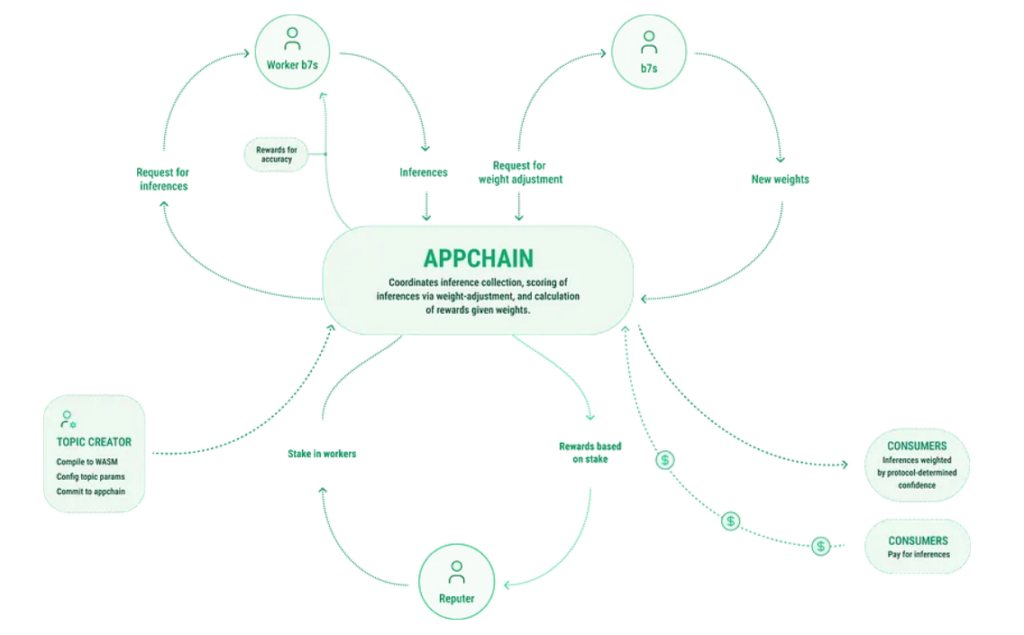
Allora is structured around various “topics,” each tailored to a specific machine learning task or objective. For instance, one topic may focus on predicting future asset prices, another on social sentiment analysis, and another on generating natural language.
Allora manages decentralized machine learning through a “weighting” system, which coordinates participating models to deliver valuable inferences within their respective domains. The quality of their outputs determines each model’s weight, effectively serving as a rating of its reliability and contribution to the network. This feedback mechanism directly incentivizes precise and insightful contributions.
Models with higher weights gain increased influence and economic rewards within the network. This compounding effect enables Allora to continually enhance its performance, surpassing the limitations of individual models. Allora enables individuals to monetize their models by deploying them on the network, contributing to the ongoing enhancement of the network’s collective intelligence. Even if you do not have your own model, you can still participate and earn rewards by fine-tuning open-source models within the network.
Token
The $ALLO token is a fundamental element of the Allora Blockchain, facilitating value exchange among participants. It is essential for paying access fees, obtaining inferences, and staking to maintain the network’s economic stability. The token’s emission and distribution are strategically designed to reward outstanding contributions and ensure the network’s long-term sustainability.
Allora Network employs a Pay-What-You-Want (PWYW) model, allowing token holders to set their own fees for inferences generated by the system. This flexible approach promotes inclusivity and enables participants to assign value based on their individual needs and preferences. Token holders determine how much $ALLO to spend on each inference, encouraging engagement with the network in alignment with their perceived value of the service.
Key aspects of the $ALLO token include:
- Engagement with Topics: $ALLO tokens cover registration fees for workers and reputers who join or contribute to various topics within the network.
- Staking and Delegation: Validators and reputers in the network use ALLO tokens for staking. Token holders can also delegate their stake to validators or reputers, earning rewards in $ALLO tokens.
- Reward Allocation: $ALLO tokens are distributed as rewards to participants, with the Consensus Layer providing detailed explanations of how rewards are allocated.
- Emission Schedule: The token’s emission rate decreases over time, akin to Bitcoin’s halving events. This creates a predictable token release timeline and ensures continued rewards for participants within a capped supply framework.
Traction
The Allora Network is currently in its testnet phase and is preparing for its upcoming mainnet launch. Allora Labs is actively running a points program to acknowledge contributions from participants within the network. While the exact number of users has not yet been disclosed, the network boasts a robust and engaged community. With over 200,000 followers on X (formerly Twitter) and Discord, the project’s significant market awareness is evident.
Team
Nick Emmons is the Co-founder and CEO of Allora Labs, bringing a wealth of experience in the cryptocurrency sector that is crucial for user engagement and project advancement. Upshot, a long-standing leader in AI and cryptocurrency infrastructure, has been instrumental in the development of Allora. Recently, Upshot has fully transitioned into Allora, demonstrating its dedication to the project’s evolution. This shift highlights the strategic integration of Upshot’s expertise and resources to bolster Allora’s capabilities and extend its impact in the industry.
Investors

Conclusion
Allora empowers applications to harness advanced, secure AI through its self-improving network of machine-learning models. By integrating innovations in crowdsourced intelligence, federated learning, and zero-knowledge machine learning (zkML), Allora opens up a broad new range of applications at the convergence of cryptocurrency and AI. Supported by strong investors and a robust community, Allora is a notable project to watch. Its innovative solutions—including AI-driven reward systems and enhanced NPC dynamics in gaming—demonstrate a commitment to precision, security, and impactful real-world applications. By continually pushing the boundaries of AI capabilities, Allora Network establishes itself as a leader in AI advancement, setting new standards and paving the way for future innovations.
| Fundamental Analysis | ||||||
| Assessment | Notes | |||||
| Problem | Moderate, somewhat persistent problem | 2 | ||||
| Solution | Distinct, defensible solution | 3 | ||||
| Market Size | Large market, significant growth potential | 3 | ||||
| Competitors | Emerging market with few strong competitors | 3 | ||||
| Unique Value Proposition | Clear differentiation and value for customers | 3 | ||||
| Current Traction | Early traction, user engagement starting to grow | 2 | ||||
| Unit Economics | Unit economics currently negative, no clear path to profitability | 1 | ||||
| Tokenomics | Basic token strategy, potential for improvement | 2 | ||||
| Product Roadmap | Basic roadmap, lacks detail or innovative features | 2 | ||||
| Business Model | Proven business model with clear path to profitability | 3 | ||||
| Go-to-Market Strategy | Solid GTM strategy, clear target market and channels | 3 | ||||
| Regulatory Risks | Minimal regulatory risk, strong mitigation and adaptability | 4 | ||||
| Total | 64.58% | |||||


